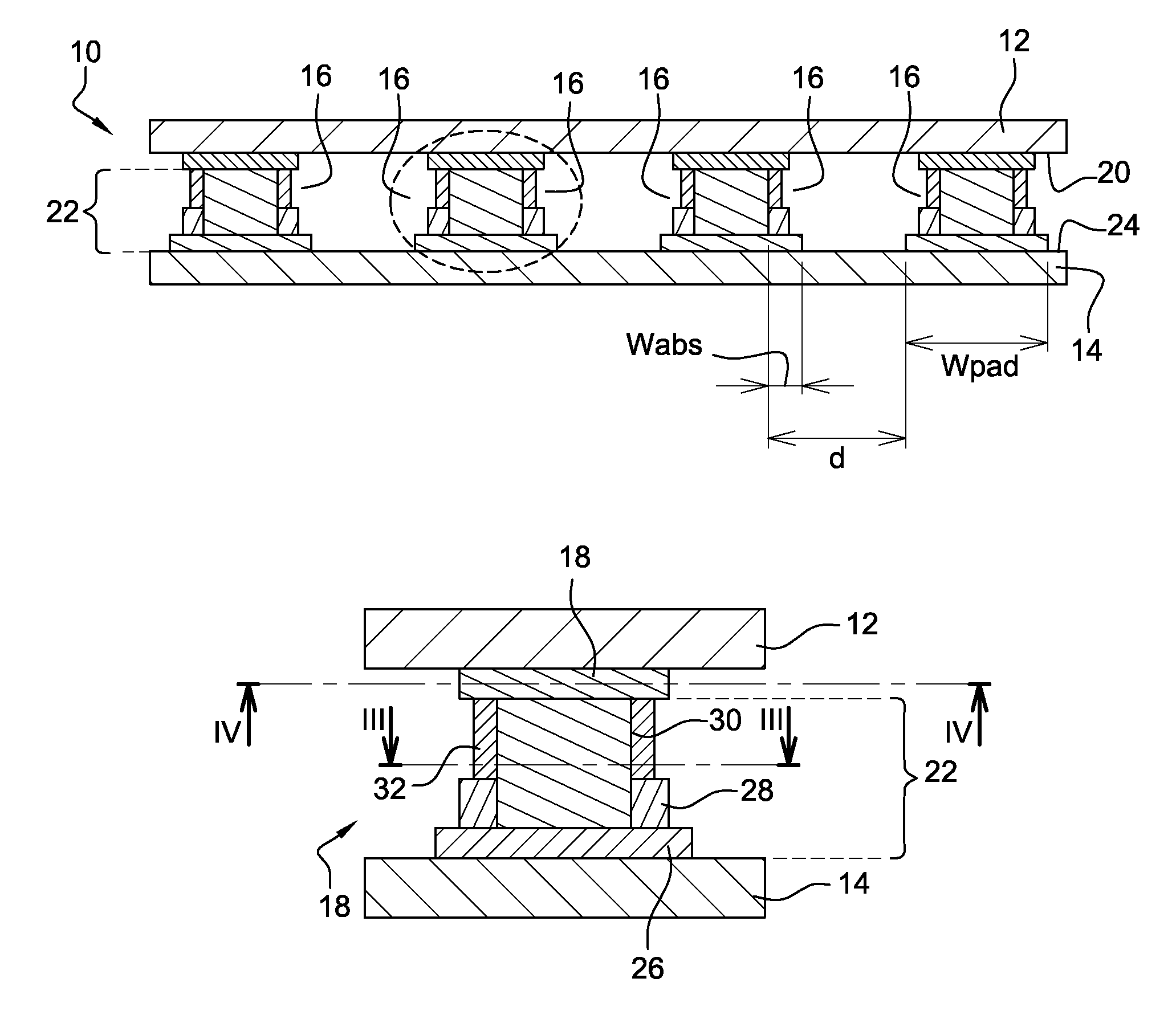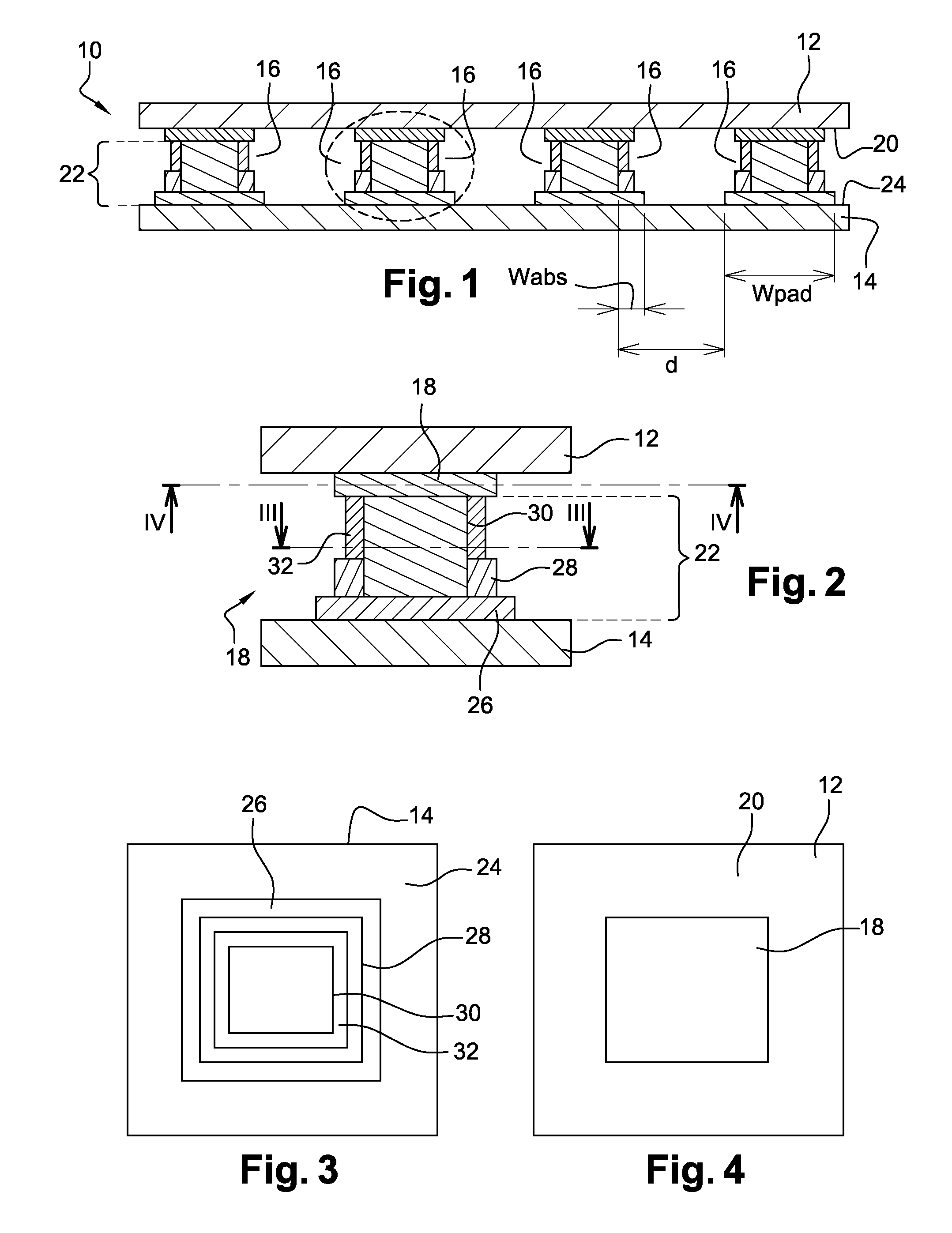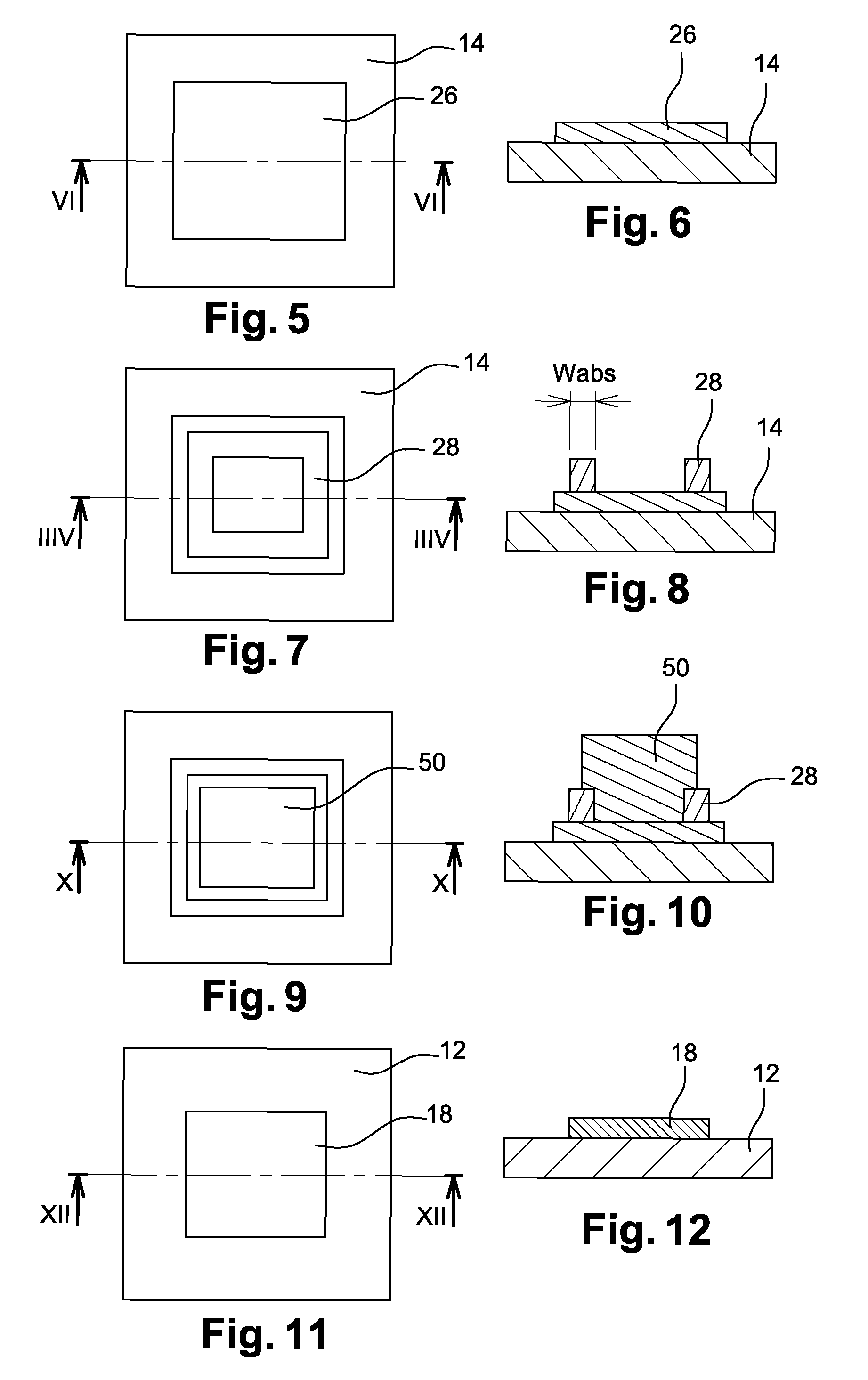Flip-chip hybridisation of two microelectronic components using a UV anneal
a microelectronic component and anneal technology, applied in the field of flip-chip hybridization of two microelectronic components, can solve the problems of embrittlement of components, inability to withstand such temperatures, and disadvantages of submitting components to significant thermal shocks
- Summary
- Abstract
- Description
- Claims
- Application Information
AI Technical Summary
Benefits of technology
Problems solved by technology
Method used
Image
Examples
Embodiment Construction
[0031]A device 10 according to the invention will be described in relation with FIGS. 1 to 4. Device 10 comprises a first and a second components 12, 14 hybridized to each other by mean of electric interconnects 16. First component 12 for example comprises an array of photosensitive elements, and the second component for example comprises a circuit for reading said array, interconnects 16 connecting each photosensitive element of the array to the read circuit. The second component is further transparent to ultraviolet radiation at least in line with interconnects 16. Particularly, the second component may be essentially made of flexible, low-cost and transparent plastic materials, such as PEN or PET, or also be made of glass, in which case the second component is transparent over its entire surface.
[0032]Interconnects 16 each comprise a solid conductive area 18 formed on a surface 20 of first component 12, for example, a metal area made of gold, silver, copper, platinum, titanium, o...
PUM
 Login to View More
Login to View More Abstract
Description
Claims
Application Information
 Login to View More
Login to View More - R&D
- Intellectual Property
- Life Sciences
- Materials
- Tech Scout
- Unparalleled Data Quality
- Higher Quality Content
- 60% Fewer Hallucinations
Browse by: Latest US Patents, China's latest patents, Technical Efficacy Thesaurus, Application Domain, Technology Topic, Popular Technical Reports.
© 2025 PatSnap. All rights reserved.Legal|Privacy policy|Modern Slavery Act Transparency Statement|Sitemap|About US| Contact US: help@patsnap.com



